28th May, 2025
Everest’s Darkest Hour – The True Story of the 1996 Disaster
- Magnificent Himalayan Treks
Rivers? Deep. Mountains? High, as nature says.
Every adventurer wants to do something in life. Say, like getting on the top of mountains. But, not everyone is born Tenzing Norgay Sherpa or Sir Edmund Hillary.
Let's turn back a little and learn about what actually happened in 1996 and why it gained popularity today. Shall we?
Evidence claims that the deadliest event took place at the top of Everest in 1996. This casualty took place between 10-11 May making a threat to almost 8 climbers that were on their descent from the summit.
There are no backward buttons to life. But if it were, Possibly all the climbers would choose the rewind button just to avoid this day in May.
The most traumatizing event is the 1996 Mount Everest expedition.
Later in 2015, there was another hazardous event after the earthquake that carried away the safety of the tallest mountain. But no year has defeated in a loss in the year 1996.
This year took lots of life, especially of the most beloved mountain guide Rob Hall.
There were numerous threats questioned regarding the safety, and rescue mission after the event took place in Everest along with the increment in commercialization.
But till today, the 1996 Mount Everest Disaster has the highest impact on lives causing goosebumps to study, watch, or research.
Table of Contents
What actually happened in the 1996 Mount Everest Disaster?
Mount Everest has lots of stories to tell. Some are very horrifying stories. They leave traces in our hearts.
This is a story that will give chills knowing the condition of the climbers climbing the tallest mountain in 1996.
In this year, the climbers were led by two teams.
The Adventure Consultants team is led by Rob Hall and the Mountain Madness team is led by an American climber Scott Fischer.
Teams were led by Hall and Fischer both experienced leaders of commercial expeditions.
The Mountain Madness was followed by Neal Beidleman, Pete Schoening, Charlotte Fox, Tim Madsen, and Sandy Pittman.
Sandy Pittman, Charlotte Fox, and Tim Madsen from the MM team were guided by Beidleman.
But despite their expertise both the teams failed miserably.
On the way to the summit, they were hit by the strongest storm trapping everyone in a precarious position.
As the report says, there were two Americans Scott Fischer( The Mountain Madness) and Taiwanese Gau Ming-ho ( leader of the Taiwanese expedition) were stuck unable to be reached at above 8, 400 m.
Note: On May 10, a five-member team was led by Gau Ming-Ho.
It has been claimed that 8 mountain climbers including the two leaders Scott Fischer ( The Mountain Madness)and Rob Hall( Adventure Consultant) died at the summit.
The deadliest season took the life of a list of climbers for multiple reasons like the lack of oxygen or oxygen tank.
May your fellow climbers rest in peace!
Likewise, a journalist Krakauer was supposed to climb with the expedition team of Scott but Rob Hall spared him at a low cost.
This increased the rivalry between Hall and Fischer.
The climbing season in 1996 was a lot of risk followed by the delay at their trails.
They started their journey at midnight and were supposed to end by 2:00 PM local time which is almost the time to get back safely to Base Camp.
Anatoli Boukreev was the first person to reach the summit that day without supplemental oxygen at 13:07, but he couldn't wait. In spite of this, he left the group and went to the nearest camp, camp IV all by himself.
The other athletes were trying their best to reach the top when the first climber descended to Camp IV at 5:00 pm.
On the same day, around 5:30 P.M. the mountain was hit by the storm. The storm made the tied ropes invisible making every climber unable to find their way.
Boukreev was frostbitten, half blinded but still he stumbles to Camp IV.
His every actions taken proved humanity alive and he did his best to find the lost climbers.
Luckily, on May 14 fellow mountaineers made it to Base Camp but injured and traumatized
Krakauer, Weathers and Hutchinson, Taske were the survivors to reach the Base Camp safely.
The brave Beidleman led the party back to Base Camp.
On May 6, by passing Camp I ( 5,944m ) and stopping at Camp II ( 6500 m ) for two nights, the team began an assault.
Scott Fischer tried his best and descended from Camp II and tried to rescue Kruse back to Base Camp for treatment. At the end, he had to sacrifice his own life in the mountain.
Later, his frozen body was found by his partner Anatoli Boukreev during the rescue.
He tried his best to rescue numerous climbers.
The human endurance and faith were restored because of his attempt to save the climbing team.
Likewise, over the two days, Weather was led to camp II by eight climbers from different expeditions and was evacuated by helicopter as told it was one of the highest ever attempted.
Note: On May 9th, 3 teams with a total of 33 climbers made their way out of Camp 4 from the Nepal side( 7,950) in an attempt for a successful attempt. Likewise, one climber and two Sherpas make up the Taiwan Team.
Film on Mount Everest Disaster 1996
On September 18, 2015, a movie entitled “Everest” was released as a tribute caused by the loss.
Most importantly, it wants to show the tragedy and the suffering that the climbers had to face while descending from the Everest expedition, in 1996.
After the Everest Tragedy in 1996, the Everest movie released sums up all the grievances of May 10-11, 1996.
The eight climbers were humans full of life who wanted to conquer their every fear and take a breath of victory at the top of the world which they did.
Who would have thought the glorious events would turn up to be the darkest alleys of their life on their return from Summit?
No one!
The Movie of “Everest” 2015 filmed during the 1996 Mount Everest Disaster was directed by Baltasar Kormukar.
The portrayers are:
Jason Clarke as Rob Hall. Rob Hall was the leader of Adventure Consultants Expedition.
Likewise, Jake Gyllenhaall, a famous movie star as Scott Fisher, is the head of the mountain Madness.
The other castmates were John Hawkes, Josh Broklin, Keira Knightley, Emily Watson and so on.
The filming is accurate based on research on the incident of 1996.
Followed by all the terrors, uncertain weather, and geographical constraints of the peak, this movie “The Mount Everest Disaster 1996” provides proper visualization sobbing the viewers and letting them grieve as a memoir for the dead.
Videos Based on “The Mount Everest Expedition 1996”
You can surf the internet. There are plenty of videos on the calamities caused by “ The Mount Everest Disaster 1996” till today.
There might not be the characters included as it is extremely difficult to film anyone during the ascent and descent. If there are, the vision might be blurry.
The Summit of the mountain is very steep and full of terrors. The visibility is poor along with the geographical constraints.
However, multiple videos, and documentaries are easily on YouTube. You are just a click away.
The “Everest” movie released in 2015 shows all the aspects of “ The Mount Everest Disaster 1996” making everyone teary eye as the film is played by famous actors Jake Gyllenhaal, Jason Clarke, and so on.
Deaths in The Mount Everest Disaster 1996
Who were the people who died in The Everest Disaster in 1996? How many of them died? Why is the year 1996 so important?
A very common question that crosses the heart of many people as the year has huge popularity till today.
The Disaster in, May 1996 is one of the most traumatizing turn of events in the history of Mountaineering. The tragic turn of events is still engraved on the hearts of the loved ones where the dead are just memories.
8 people died caused by the Mount Everest Disaster in 1996.
There have been many deaths on the top of the world but the Everest Tragedy in 1996 has turned out to be the number one deadliest killing, not one, not two but eight destroying 8 families mentally.
The victims of the calamity are still remembered today causing the Mount Everest Expedition 1996 to be one of the troubled incidents recorded.
Dead people in the 1996 Mount Everest Disaster
They say death is the ultimate truth in life. Beautiful it may sound but the feeling of the farewell to their loved ones may be less beautiful.
The Everest Disaster 1996 killed 8 people leaving their loved ones shattered namely:
Rob Hall
The most beloved mountain climber. He was the leader of the Adventure Consultants before the disaster.
The Mount Everest Disaster of 1996 caused the separation from the team causing the leader on the ice-cold summit to die alone and scared.
Doug Hansen
The calamitous storm of Mount Everest in 1996 led Dough Hansen( Adventure Consultants) to suffer on a dark night during his descent led by the unstoppable storm.
He died but we still remember this American climber for his courage and bravery.
Yasuko Namba
Yasuko Namba was an experienced Japanese climber. As a Participant in the Adventure Consultants, she had thrived many more mountains at a very young age.
Despite her courage and bravery, she was unable to stand in the extreme freezing cold with heavy storms. In the end, her demise was painful.
May she Rest In Peace
Scott Fisher
He was the organizer of the Mountain Madness Expedition and also the high-altitude mountaineer.
An American experienced climber who has to face casualties of heavy exhaustion and poor climatic conditions in the Mount Everest Disaster 1996.
On the other hand, a few members of the ITBP team with the main purpose of exceeding the tallest peak in the world. They were professional mountain climber on their way which later turned out to be tragic. The team members were
Tsewang Samanla
Dorje Morup
Tsewang Paljor
Note: Tsewang Paljor namely known for “ The Green Boots” today died as the casualty of the Everest Disaster 1996.
He was a member of the military.
The climbers later encountered his body along with his bright boots. They monikered him by this name.
Tragically, Tsewang Samanla and Dorje Morup were never to be found.
Where are the survivors of the Mount Everest Disaster 1996 today?
A very questionable curiosity amongst people is the climbers who lived after the tragic disaster of 1996. Fair enough!
The 1996 Mount Everest Disaster though was the most dangerous disaster to encounter, luckily there were few survivors who are still with us today.
Tragically, the disaster took 8 lives but been heard that the survivors of the Everest.
Disasters have moved on and are now enjoying their lives getting past the incident.
Who Survived The Mount Everest Disaster 1996
Fate plays an important role in life. The Mount Everest Disaster of 1996 killed 8 members within a day. But Beak Weathers who was a part of the same team survived.
Fate bought him from the dead. Even his own team members were surprised that he survived.
Who would have thought a guy who was left alone twice on the greatest Mount Everest Disaster in 1996 would even escape his death?
How lucky must Beck feel despite being left to die twice at the top of Mount Everest?
The guy later became a motivational speaker sharing his experience on The Mount Everest Disaster 1996.
As a motivational speaker, he tells everyone to never let go of the passion that one carries.
“Into The Air” by John Krakauer later brought more light on the Mount Everest Disaster in 1996 and also the best-selling book of all time.
Another survivor of the Everest Disaster in 1996 was Anatoli Boukreev. He was a guide for one of the expeditions but unfortunately couldn't escape death as he tragically died in an avalanche on Annapurna in 1997.
Dr. Kenichi Namba( Yasuko Namba’s husband) survived the disaster engraving his love for his beloved wife and advocating for other climbers.
Nonetheless, Mike Groom gave his best towards mountaineering before he retired. I hope he feels lucky and embraces the life he has now after the Mount Everest Disaster in 1996.
Is there anyone to blame for the tragic incident?
An unexpected turn of events can happen at any time. They can be predicted but the hazardous disasters are unstoppable. During the climb of the 1996 Mount Everest Disaster, there were multiple threats to be acknowledged.
However, it's difficult to pinpoint or blame any individual for a certain group to blame.
The tragedy of the Everest Expedition holds lots of factors that caused death in the 1996 Mount Everest Disaster.
The crowd is not taken care of as a part of commercialization. This causes heavy traffic and delays creating less space for climbers to reach the top.
One cannot ignore the fact that there were inadequate oxygen supplies and inexperienced climbers, and when the storm hit the mountain everyone was passive to handle the storm.
The critics of the 1996 Mount Everest Disaster have criticized the entire management of the expedition as careless, and full of rivalry and blamed the entire expedition leaders, guides, and the climbers.
They blame both Hall and Fischer.
The rivalry between the Adventure Consultants and Mountain Madness led to the ultimate disturbances in the decision-making process.
But ultimately both Hall and Fischer couldn't escape death.
The entire season was at risk
The climbing community questioned humanity when the climbers pleaded for help and were ignored.
Those critics also brought a light the poor protocols of the mountaineering community which later led to ensuring more safety protocols for the Mountain Community.
Expedition Guides 1996 Mount Everest Disaster
During an interview taken with the survivors of the Disaster in 1996, everyone could predict the incident was more and more traumatizing despite their survival.
The incident haunted them day and night.
Especially, one of the satellite phone calls of the professional mountaineer, Rob Hall to his beloved wife where he says,
“ Sleep Well my love! Sleep Well”. It's confronting and heartbreaking at the same time.
The 1996 Mount Everest Expedition was guided by him, a professional from New Zealand. The critics have blamed the person for his poor decision-making process.
Another climber Doug Hansen who worked at a Post Office in Seattle, saved enough to follow his dreams with the team. The 1996 Mount Everest Expedition was the second attempt for Doug.
Yasuka Namna, a Japanese businessman was there to explore the peak who is claimed to be the second Japanese woman after Junko Tabei in the history of the Everest Expedition.
The tragedy on May 10, 1996, holds more or less unforgettable memories.
Rob Hall along with his team and other climbers began their ascent towards the summit from camp IV. They started their journey from the South Col.
The heavy traffic causing the climbers to reach the summit untimely caused the main threat in the alternation of the planned time.
There were two teams during the expeditions. Team lead by Rob Hall and team led by Scott Fisher. This made the way to the summit more congested leading the climbers in the delay. However, both team leaders tried their best.
Yasuko Namba and Doug Hansen reached the top of Everest much later than the predetermined turnaround time of 2 am. They reached at 12:00 pm.
The risk in their life started here!
No wonder, mountains are unpredictable. They have free will to stay calm and free will play like a swing. But the humans should be considerate about it. After all, it's their life and not of mountains.
The summit attempt is not an easy thing to do.
The geographical constraints are itself a threat on the climb. The bad climatic conditions during the afternoon made it worse that day. The storm got fierce with unsettling low temperatures. The climbers got trapped.
Rob Hall on his way tried to help Hansen who was stuck, not able to make a way on the descent on his own for hours. Both of them communicated through radio.
But the tragedy, they couldn’t help each other.
The rescuers couldn't reach both of them.
Rob Hall died from Hypothermia and Hansen who tried his best to survive died of extreme exhaustion and altitude sickness just a little down from the peak.
Note: When you think of going to the mountains, do not think of going alone unguided. Take professional sherpas with you, professional climbers, porters, and travel guides.
This will unleash half of your burden creating less threat to your life.
The night of the 1996 Mount Everest Disaster
At what cost are you willing to risk yourselves?
Ambitions are good. The obsession with ambitions is good but is it worth risking your body or life?
Are you willing to risk it again knowing that you have to live your entire life without your fingers or toes or live with a pronounced limp?
On the night of the 1996 Disaster, people died. The ambitions died. The obsessions with their ambitions died. They were brave but was it really worth risking?
I hope not!
Yasuka Namba was the first to reach the summit of the team and the second Japanese woman to break history. But the joy of victory couldn't last long. The woman froze as she got trapped in the heavy storm and died of hypothermia during her descent.
Beck Weathers an American climber is a lucky survivor who was left twice to die as it was so difficult to be rescued.
Unfortunately, he survived but ended up having multiple limbs amputated.
Beck later in an interview also said, he would never have climbed the summit if he knew his entire life would be of struggle without his body parts.
The limelight of the Everest disaster in 1996 definitely questions the morality and the safety hazards during commercial trips.
The night of the 1996 Disaster taught everyone to be civilized and work as a team.
It focused on learning the importance of sticking to timed quarter-rounds and the hazardous encounters at the summit of Mountains.
The Mount Everest Disaster holds multiple controversies. One of the controversies includes Jon Krakauer where the climbers were insecure enough to be filmed their every move during the journey.
John Krakauer brought the incident to the limelight in the book “ Into Thin Air” and also portrayed in the film “ Everest” in 2015.
The disastrous storm took lots of lives unforgettable, criticizing, leaving traces of memories.
There were questionable queries on commercialization after the Mount Everest disaster 1996.
They also tightened the safety of climbers after the incident took place.
Documentary on the 1996 Mount Everest Disaster
Visuals help you make a clear mental picture of everything. Research says, that watching videos is more effective than any theoretical practice.
If so, one might wonder what are the documentaries based on the 1996 Mount Everest Disaster. Well! there are plenty of them.
The top-notch documentary “ Remnants of Everest: The 1996 Tragedy “, was released in 2007.
“ Seconds from Disaster - Into the Death Zone” released in 2012 is also a TV documentary based on the 1996 Mount Everest Disaster.
Likewise, “Frontline: Storm Over Everest” released in 2008 shows the tragedies caused by the Mount Everest Disaster 1996 through multiple perspectives.
Last but not least “Everest” is a documentary film made to put a limelight on the disaster of 1996 caused at Mount Everest.
The documentary shows the unexpected tragedy the climbers faced during the 1996 Mount Everest Disaster.
The heavy storm, the fallen avalanches, the climb, and the death along with the survivors rescued.
Everything is portrayed and played by multiple characters but the different storylines for clear visualization of the 1996 Mount Everest Disaster.
Notable Bodies on 1996 Everest Disaster
One of the most tragic year incidents to be remembered in history is the 1996 Mount Everest Disaster.
There were 8 deaths but the most notable victims were Rob Hall and Scott Fisher.
Both were professional leaders who unlikely couldn't escape their death despite being the top-notch mountaineering guides for other unprofessional climbers too.
Rob Hall’s body was never rescued despite multiple attempts to find out his location.
However, Fisher’s body was rescued and cremated by their beloved.
Victims of the 1996 Everest Disaster
Mountaineers say the hardest part of the mountain is not the summit.
It is the descent. The return from the summit.
Multiple forces are pushing against you. The exhaustion, the less oxygen, the less enthusiasm to reach the summit as you no longer have that thirst.
The 1996 Mount Everest Disaster took the climbers to the summit but they couldn’t make it from the summit.
This journey was led by experienced guides, climbers, and Sherpas.
An experienced climber Rob Hall from New Zealand and Scott Fisher a very professional climber from America were the victims of the 1996 Mount Everest Expedition.
They were the most famous and beloved.
The rest victims were Doug Hansen, a postal worker from Seattle who had already summited the first trip to Everest and the 1996 Expedition was his second attempt.
Likewise, Yasuko Namba the second Japanese climber to climb after Junko Tabei was the notable victim who perished at the top of the summit.
The unforgettable Sherpas performing duties vital to both teams are applaudable.
1996 Mount Everest Disaster Rob Hall
The tragic incident that took place during the 1996 Everest Disaster is the demise of Rob Hall.
A New Zealand mountaineer who came a long way in the mountaineering industry with name and fame in today’s world.
Rob Hall was the leader of the expedition that was led in 1996. As one of the leading guides in the history of mountaineering, Hall was a good human underneath who sacrificed himself for the rescue of his teammate Doug Hansen who was trapped for hours at the summit trying to make his way.
Despite every attempt, neither Rob could save him nor his team members.
The turn of misfortune events is likely to be remembered till today. Nonetheless, as a leader, he is a professional climber but critics have criticized the leader for his poor decision-making abilities. This might be somehow true.
No one is to be blamed but the jealousy among the other group created a sense of jealousy as he wanted more team members to reach the summit than the opponent.
The death zone above 26000 feet where there is thin air and less oxygen engulfed the leader and his team members.
History still remembers the untimely and uncertain demise of the dead.
Today, there are various documentaries, comics, books has the tales and narratives of Rob Hall and the disastrous Expedition to Mount Everest Disaster in 1996.
1996 Everest Disaster Scott Fisher
Mountains do not hesitate to strangle your ego when you are on your journey. The rivalry you create may not be good. Your decision may alter another person’s course of action.
The 1996 Mount Everest Expedition is a tragic event that is caused by the entirely wrong decisions taken by the leaders, poor leadership capabilities, and ego among the competitors.
The wrong decision that Scott Fisher and Rob Hall took to reach the summit beyond their physical capacities resulted in the death of their team members.
Mountain Madness is one of the commercialized companies and Scott Fisher was the leading among all.
The Mount Everest Expedition 1996 was led by Scott Fisher and another team was led by Rob Hall. There was a sense of Competition.
On May 10, 1996, a heavy storm hit Mount Everest where there was no chance of survival.
At that moment with no clue left behind to fight against the storm Fisher and the other team members were left to die uphill the mountain.
The physical exhaustion causing hypothermia caused the climbers to leave this world behind.
Lessons learned from Mount Everest Disaster 1996
The mountains are high. They are beautiful. But just put one foot in front of the other and then you will realize mountains are not for everyone.
The Mount Everest Disaster of 1996 caused a massive loss of life and property.
This proves that no one can control nature. What stays at the top, stays at the top.
Like the climbers, Rob Hall, and Doug Hansen, they never returned despite every attempt from their loved ones.
Mount Everest lies 8848 km high. It stands alone.
It doesn’t check your financial status, or follow casteism or racism. It treats every human equally but sticks to its own rules.
The tragic expedition of the year 1996 on Mount Everest totally teaches us that one moment you are alive and the next moment you are simply gone.
Communicate, work as a team, and maintain your physique. It's most important no matter what.
The expedition to Mount Everest in 1996 majorly focused on the psychological realities of climbers.
Despite the love among the team, there still was miscommunication and rivalry among members.
One couldn't ignore the poor decisions made by the members during the expedition to Mount Everest in 1996.
That's why every challenge and every barrier should be overcome as a team without disputes.
The passionate climbers are no more with us. The high-altitude climbing got riskier than ever.
The Mount Everest Disaster of 1996 took them somewhere far away.
Not just in 1996, even after 10 years body of David Sharp, the body of an American woman was still unreached at the top.
Means to say, the climbers still die
I hope they know the world still remembers them as brave and heroic people from beyond the horizon.
Today, the people of the 21st century still remember the dead.
May the dead Rest In Peace
Recent From Blog
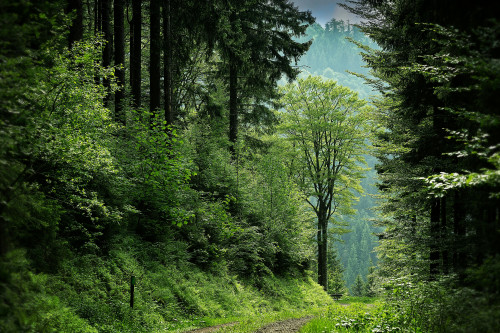
13th Oct, 2025
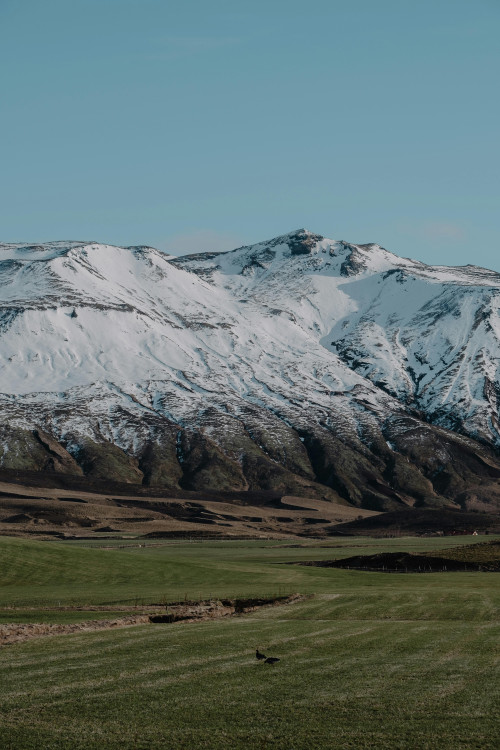
9th Oct, 2025
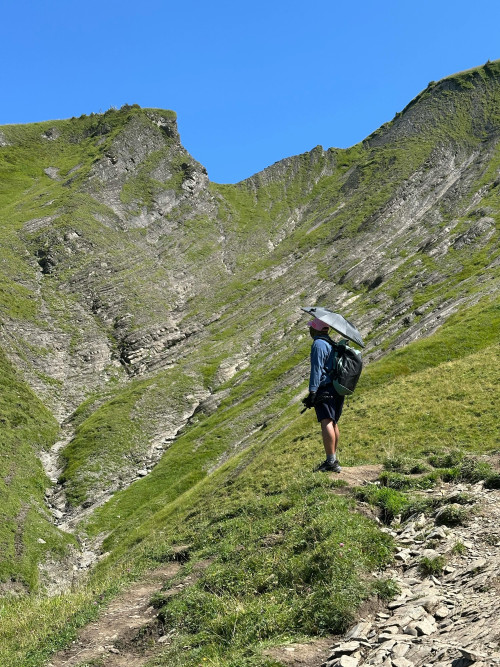
21st Sep, 2025
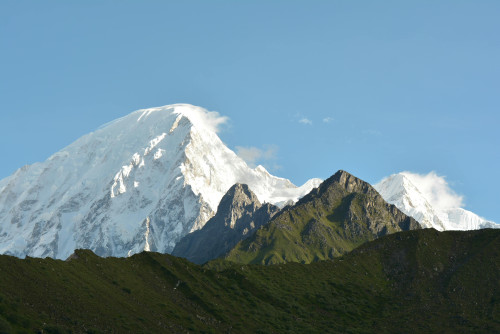
18th Sep, 2025

14th Sep, 2025

3rd Sep, 2025

28th Aug, 2025
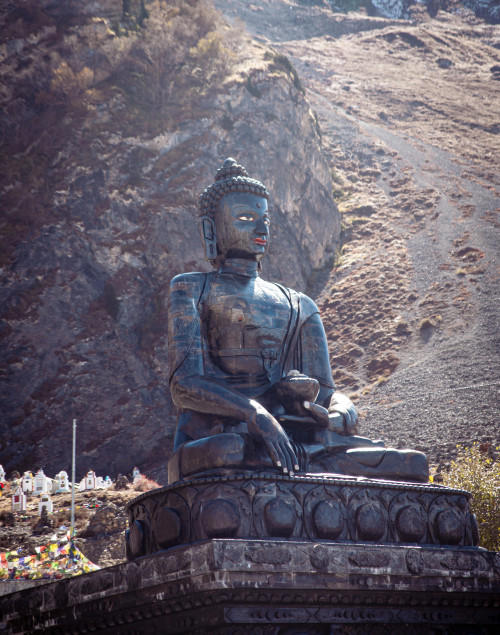
25th Aug, 2025




